-
Posts
30 -
Joined
-
Last visited
Content Type
Profiles
Forums
Events
Posts posted by butovsv
-
-
The center of the mass system of bodies is a function of 2 (two) time-dependent variables.
[math]{{\vec R}_c}(t) = \frac{{\sum {{m_i}(t){r_i}(t)} }}{{\sum {{m_i}} (t)}}[/math]
The velocity of the Center of Mass is a derivative of the radius vector:
[math]{v_c}(t) = \frac{{d{R_c}(t)}}{{dt}} = \frac{{\sum {{m_i}{{\dot r}_i}(t)} }}{{\sum {{m_i}} }} + \frac{{\sum {{{\dot m}_i}{r_i}(t)} }}{{\sum {{m_i}} }}[/math]
If you want to know the antiderivative of a function, try to integrate the derivative of this function:
[math]{R_c}(t) = \int {{v_c}(t)} dt = \int {\left( {\frac{{\sum {{m_i}{{\dot r}_i}(t)} }}{{\sum {{m_i}} }} + \frac{{\sum {{{\dot m}_i}{r_i}(t)} }}{{\sum {{m_i}} }}} \right)} dt = \int {\left( {\frac{{\sum {{m_i}{{\dot r}_i}(t)} }}{{\sum {{m_i}} }}} \right)} dt + \int {\left( {\frac{{\sum {{{\dot m}_i}{r_i}(t)} }}{{\sum {{m_i}} }}} \right)} dt[/math]
The radius vector of the CM of the system of bodies is the result of the addition of two "vectors" - the radius vector of inertial displacement and the pseudovector of deformation of the system of bodies.
-2 -
35 minutes ago, swansont said:Quote
Write the dependence of the "center of mass of the system of bodies" on the "resulting force".
F=ma
It is very, very, very, very WRONG.
Have I explained in sufficient detail?1 minute ago, Bufofrog said:It seems clear to me that you are unable to answer the questions put to you. You simply have an animation that shows a physically impossible situation and then hand wave and dodge questions about the animation since it is indefensible.
This thread is due to be tossed in to the trash can soon. It certainly has my vote for the trash!
What is the failure of my answer?
2 minutes ago, Bufofrog said:You simply have an animation that shows a physically impossible situation
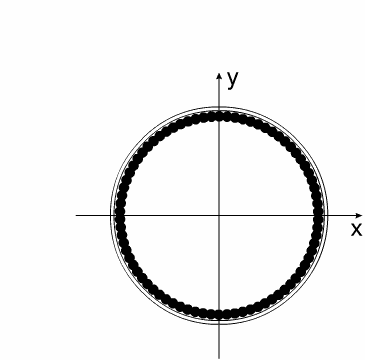
The total momentum of this system is zero.
There is no other solution to the balance of the total momentum of this system!
But if you see with your own eyes the center of mass of this system, you see how the CM moves, violating the laws of conservation, then this is exclusively your personal problem!This beautiful task should not be sent to the "trash can".
You need to throw your naive childish sensations of "banal physics" into the basket!The knowledge "twice two is always four" is very good knowledge!
Right!
But it will not help in extrapolating the function of the CM of the system of bodies in which the parts change masses!0 -
3 minutes ago, swansont said:
Whatever the total mass is. This is your example. I don't know the value.
Stop stalling and answer the questions that have been asked of you.
I apologize!
I have said this many times already!
The center of Mass is not a material object!
The CM does not have mass!
Newton’s second law cannot be applied to the Center of Mass!The Mass Center is calculated as follows:
[math]{{\vec R}_c}(t) = \frac{{\sum {{m_i}(t){r_i}(t)} }}{{\sum {{m_i}} (t)}}[/math]
But like this:
[math]{{\vec R}_c}(t) = {{\vec R}_c}(0) + {{\vec V}_c}(t)t + \frac{1}{2}\frac{{{{\vec F}^e}}}{M}{t^2}[/math]
coordinates of a single material body with mass are calculated.
5 minutes ago, swansont said:7 minutes ago, butovsv said:And what is the mass of the "Center of the Mass of the system of bodies" equal to?
Whatever the total mass is. This is your example. I don't know the value.
Stop stalling and answer the questions that have been asked of you.
Here are the coordinates of the Mass Center of a certain system:[math]\vec R = \frac{{\sum {{m_i}{{\vec r}_i}} }}{{\sum {{m_i}} }} = \frac{{{m_1}{{\vec r}_1} + {m_2}{{\vec r}_2} + {m_3}{{\vec r}_3} + ... + {m_i}{{\vec r}_i}}}{{{m_1} + {m_2} + {m_3} + ... + {m_i}}}[/math]
Please help me find the "total mass."
That "total mass", which cannot move in any way without the "acceleration" caused by "external force"!The unit of measurement of the Center of Mass of the system of bodies is the unit of length of the selected Reference System. Meters, feet, inches, elbows, yards, miles .....
I would be very grateful to you, “atomic clock specialist,” if you would explain to me, deeply illiterate, how to apply Sir Newton’s second law to “miles”.
Thank you in advance!0 -
13 minutes ago, swansont said:Quote
"Dr Swanson" wrote:
Such a phrase is permissible for a student.
Your attempts would not be permissible for a student who wished to pass their course.
Then correct your phrase!
Just take it and write the Tsetra Mass equation of the system of bodies!
And look at what this value depends on!
In order not to disgrace ....0 -
11 minutes ago, swansont said:Quote
Write the dependence of the "center of mass of the system of bodies" on the "resulting force".
F=ma
And what is the mass of the "Center of the Mass of the system of bodies" equal to?
0 -
11 minutes ago, swansont said:2 hours ago, butovsv said:
"Resulting force" is the change in the total momentum of a mechanical system.
Still wrong.
hM-m.....
It's good that you are literate - you all know!
You know where the truth is, and where the lie!Watch attentively!
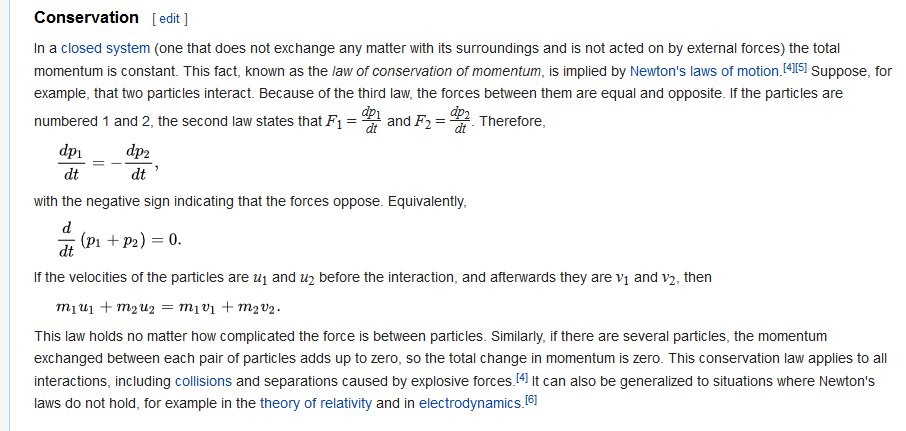
Law of Conservation of Momentum
The law of conservation of momentum states that the vector sum of the momenta of all the bodies of the system is constant if the vector sum of the external forces acting on the system of bodies is zero.
In the language of mathematics, this law is written like this:
[math]\vec P(t) = \sum {{m_i}(t){{\dot r}_i}(t)} = const[/math]
[math]\frac{{d\vec P(t)}}{{dt}} = \frac{{d(\sum {{m_i}(t){{\dot r}_i}(t)} )}}{{dt}} = \sum {{m_i}{{\ddot r}_i}} + \sum {{{\dot m}_i}{{\dot r}_i}} = 0[/math]
If: [math]\frac{{d\vec P(t)}}{{dt}} = \frac{{d(\sum {{m_i}(t){{\dot r}_i}(t)} )}}{{dt}} = \sum {{m_i}{{\ddot r}_i}} + \sum {{{\dot m}_i}{{\dot r}_i}} \ne 0[/math] - this means that the system is "affected by external forces."
Do you know what these "external forces" are, dear "atomic clock specialist?"
They are equal to this:[math]{{\vec F}^e} = \frac{{d\vec P(t)}}{{dt}} = \frac{{d(\sum {{m_i}(t){{\dot r}_i}(t)} )}}{{dt}} = \sum {{m_i}{{\ddot r}_i}} + \sum {{{\dot m}_i}{{\dot r}_i}} [/math]
This is Physics.
The science is ....0 -
Just now, Bufofrog said:
Is the above seriously supposed to be an answer to my question?
Is that not enough?
On 8/20/2019 at 10:27 AM, butovsv said:A VARIPEND is any centrifugal pump operating in the mode of periodically breaking the flow of a pumped substance.
0 -
-
35 minutes ago, Bufofrog said:
Bustvov, why do you refuse to answer questions asked of you?
Do you not want to reveal too much about your diagrams? But then what would be the point of the thread?
Maybe you don't know the answers?
I beg your pardon if I did not answer any question.
Ready to answer any question!
There are no secrets!22 minutes ago, Mordred said:Acceleration is not the same as momentum. Why don't you study basic physics terminology
True?![math]\vec F = \frac{{{\rm{d}}\vec p}}{{{\rm{d}}t}} = \frac{{d(m\vec v)}}{{dt}} = m\frac{{d\vec v}}{{dt}} = m\vec a[/math]
Something is wrong?
Butov did not study well at school ?!In general, the change in momentum looks like this:
[math]\vec F = \frac{{{\rm{d}}\vec p}}{{{\rm{d}}t}} = \frac{{d(m\vec v)}}{{dt}} = m\frac{{d\vec v}}{{dt}} + {{\vec v}_r}\frac{{dm}}{{dt}} = m\vec a + {{\vec F}^{jet}}[/math]
2 hours ago, swansont said:I will show how the Mass Center of the Varipend system is calculated:
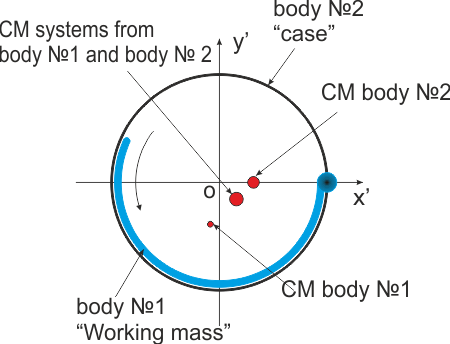
[math]{r_c}(t) = \frac{{{m_{liquid}}(t){r_1}(t) + {m_{case}}(t){r_2}(t)}}{M}[/math]
In order to calculate the coordinates of the CM system at any time, it is necessary to know the masses and coordinates of the parts of the system.
And the masses and coordinates of the parts of the system change over time.
These CHANGES are subject to conservation laws: the Law of Conservation of Momentum and the Law of Conservation of Energy.In order to calculate the coordinates of the system at any time , it is enough to solve the differential equation of the momentum balance of the parts of the system:
[math]{p_{var}}(t) = {m_{liquid}}(t){{\vec v}_1}(t) + {m_{case}}(t){{\vec v}_2}(t)=0[/math]
Oh!
Or maybe you want to solve the differential equation of a "brick" of the same mass as the Varipend system?[math]{m_{brik}}{{\vec v}_{brik}} = 0[/math]
Because there is a very respectable competent reason for this - is this equation a little easier?
-1 -
17 hours ago, Ghideon said:
It seems like I'm asking the wrong questions since the answers are still not very clear. So I'll try another approach.
I am not yet asking how your device is working. I am asking what you think the device is able to do*.Nothing complicated!
The device shows you the Law of Conservation of Momentum. 17 hours ago, Ghideon said:
17 hours ago, Ghideon said:Your descriptions contains both very basic mechanics but also seems to claim existence of physics far beyond what is currently described by mechanical laws. Laws that have been used and tested for many years. To be able to address your statements it would be good to know if you claim to have evidence that currently known physics is wrong, or you have failed to understand how current physics works.
In your head is the "Mechanics of the material body."
[math]{{\vec R}_c}(t) = {{\vec R}_c}(0) + {{\vec V}_c}(t)t + \frac{1}{2}\frac{{{{\vec F}^e}}}{M}{t^2}[/math]
And nothing but this!
But I explain to you the Mechanics of the system of bodies.
I remind you that the Mass Center of the body system is not a material object.[math]{{\vec R}_c}(t) = \frac{{\sum {{m_i}(t){r_i}(t)} }}{{\sum {{m_i}} (t)}}[/math]
The result of the CM function is not subject to the laws of conservation, because it does not have mass.17 hours ago, Ghideon said:Let's put a varipend in vacuum in space. No forces are pushing the varipend, it is at rest in our frame of reference, and it is not yet running**. Are you of the opinion that the varipend will be able to propel itself through space once the varipend is started***?
Does the varipend move at constant speed or stop after one cycle?
If the varipend are run through multiple cycles (your animations shows only one cycle) does it speed up for each cycle? Let's!
The graph of the total momentum, that is, the momentum of the entire system, coincides with the abscissa of the graph.
If at any moment in time the relative motion of the system of moving elements ceases, the entire mechanical system will have an initial velocity.
If at the initial moment of time the whole mechanical system had zero velocity in the system ... then after stopping the system of moving elements the velocity of the entire mechanical system will also be zero!

Graph of the overall momentum of the system.

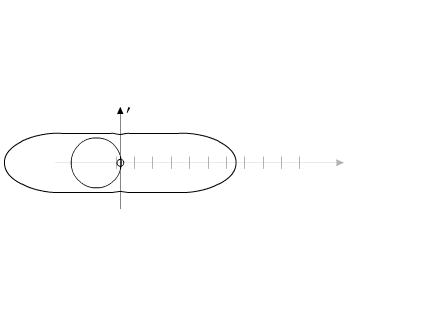
Moving the Varipend system can be called a "linear precession".
This movement is inertialess.
The total momentum of the system and the kinetic energy of the entire system, reduced to the CM of the system, are zero.
At every moment in time, the system is formally motionless.
The system does not have inertia to continue moving.In order for the system to move rectilinearly and evenly - it is necessary to expend energy.
2 hours ago, swansont said:22 hours ago, butovsv said:F⃗ =dp⃗ dt=d(mv⃗ )dt
This is Physics.
The science is ...Did you notice that pesky little "dt" in those equations?
What are the fundamental units of force? Of momentum? Are they equal?
Of course!
Quotehttps://en.wikipedia.org/wiki/Newton_(unit)
n more formal terms, Newton's second law of motion states that the force exerted by an object is directly proportional to the acceleration of that object, namely:[1]
- F=ma{\displaystyle F=ma}[math]F = ma[/math]
where the proportionality constant, m{\displaystyle m}
, represents the mass of the object undergoing an acceleration, a{\displaystyle a}
. As a result, the newton may be defined in terms of kilograms (kg{\displaystyle {\text{kg}}}
), metres (m{\displaystyle {\text{m}}}
), and seconds (s{\displaystyle {\text{s}}}
) by
[math]1{\rm{N}} = 1\frac{{{\rm{kg}} \cdot {\rm{m}}}}{{{{\rm{s}}^2}}}[/math]
2 hours ago, swansont said:Add!
[math]{{\vec F}_1} = {{\vec F}_2}[/math]
[math]\frac{{{\rm{d}}{{\vec p}_1}}}{{{\rm{d}}t}} = \frac{{{\rm{d}}{{\vec p}_2}}}{{{\rm{d}}t}}[/math]
This is Physics.
The science is ...0 -
20 hours ago, Mordred said:22 hours ago, butovsv said:
No!

Where did you see the dependence of the Center of Mass on "forces" ?!
Look in every physics textbook or for example the barycentre for the Earth Sun system. The Centre of mass is off centre of the sun due to the gravitational force of attraction of other planets such as Jupiter
If you wish confirmation study Kepler's laws. The centre of mass is always the vectoral sum of forces.
From your own link
Choose a reference point R in the volume and compute the resultant forceand torque at this point,
what do you think a resultant force is ?
"Resulting force" is the change in the total momentum of a mechanical system.
Write the dependence of the "center of mass of the system of bodies" on the "resulting force".
19 hours ago, Mordred said:In all your equations where is your direction components for your vectors ?
All equations in this branch are given in vector form.
I cannot give a calculation in the projections of vectors on the axis of the corresponding coordinates here. Very little space.
I can give a link to these calculations!18 hours ago, Phi for All said:22 hours ago, butovsv said:Bad answer.
The response of the layman.I really hope that I will be able to explain to you what Real Physics is.
!Moderator Note
Dr Swanson is a working atomic physicist, not a "layman". His atomic clocks help regulate our global GPS system. Perhaps you should examine your own failings instead.
Please focus on answering some of the questions you've been asked, and leave the professional qualifications out of it. It's clear you need some help with your concept, and you won't get it by rejecting mainstream physics. Focus on the details of your idea, and stop trying to teach physics.
A very serious argument!
And I am a specialist in powerful technological lasers.But we will not talk about lasers here!
I hope that after Dr Swanson remembers the basic concepts of Mechanics, his "atomic clock" will work even better!"Dr Swanson" wrote:
22 hours ago, butovsv said:On 8/20/2019 at 7:08 PM, swansont said:If the center of mass is is stationary, the system has no net momentum, and vice-versa.
Such a phrase is permissible for a student.
But VERY embarrassing for an "atomic clock specialist"!0 -
17 minutes ago, swansont said:
F = dp/dt
Force is not change in momentum. (F ≠ ∆p) The former has units of force, the latter has units of momentum. They cannot be equal
Oh?!
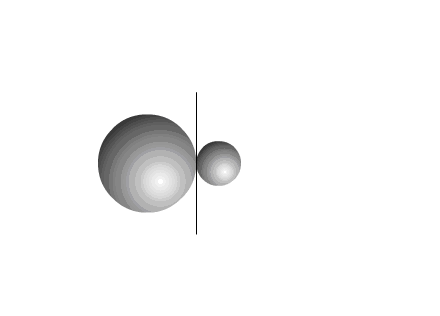
"Force" = "change in momentum"
[math]\vec F = \frac{{{\rm{d}}\vec p}}{{{\rm{d}}t}} = \frac{{{\rm{d}}\left( {m\vec v} \right)}}{{{\rm{d}}t}}[/math]
This is Physics.
The science is ...11 minutes ago, swansont said:this is nonsense.
Bad answer.
The response of the layman.I repeat again.
Watch and read carefully.
Material Point System:The total momentum of this point system is defined as follows:
[math]\vec P = \sum {{{\vec p}_i}} = \sum {{m_i}{v_i}} = {m_1}{{\vec v}_1} + {m_2}{{\vec v}_2} + {m_3}{{\vec v}_3} + ... + {m_i}{{\vec v}_i}[/math]
If all these points would have the same speed, then this speed could be taken out of the sign of the sum, and sum the mass:
And it would turn out like this:
[math] \ vec P = M {\ vec V_c} [/math]
In order for the speeds of all points of the system to become equal, all these points need to be simply connected!
Connect inelastically!
[math]{m_1}{{\vec v}_1} + {m_2}{{\vec v}_2} + {m_3}{{\vec v}_3} + ... + {m_i}{{\vec v}_i} \to Boom!!! \to ({m_1} + {m_2} + {m_3} + ... + {m_i}){V_c} = M{V_c}[/math]
Actually, what you schoolchildren only know how to do! ....
But here is the misfortune in this "simple" task ....As the author of this task, I came up with an inelastic connection of system components according to a special law.
Like this:

And in the total momentum for this system, the following regularity was determined:
[math]{m_1}{{\vec v}_1} + {m_2}{{\vec v}_2} + {m_3}{{\vec v}_3} + ... + {m_n}{{\vec v}_n} = ({m_{i1}} + {m_{i2}} + {m_{i3}} + ... + {m_{in}}){{\vec V}_{ic}} + ({m_{k1}} + {m_{k2}} + {m_{k3}} + ... + {m_{kn}}){{\vec V}_{kc}}[/math]
And what is very curious - the masses of particle systems with the same velocity (i.e. material points, material bodies!) - are constantly changing!
Look:[math]{m_1}{{\vec v}_1} + {m_2}{{\vec v}_2} + {m_3}{{\vec v}_3} + ... + {m_n}{{\vec v}_n} = ({m_{i1}} + {m_{i2}} + {m_{i3}} + ... + {m_{in}}){{\vec V}_{ic}}({t_1}) + ({m_{k1}} + {m_{k2}} + {m_{k3}} + ... + {m_{kn}}){{\vec V}_{kc}}({t_1})[/math]
[math]{m_1}{{\vec v}_1} + {m_2}{{\vec v}_2} + {m_3}{{\vec v}_3} + ... + {m_n}{{\vec v}_n} = ({m_{i1}} + {m_{i2}} + {m_{i3}} + ... + {m_{in - 1}}){{\vec V}_{ic}}({t_2}) + ({m_{k1}} + {m_{k2}} + {m_{k3}} + ... + {m_{kn + 1}}){{\vec V}_{kc}}({t_2})[/math]
[math]{m_1}{{\vec v}_1} + {m_2}{{\vec v}_2} + {m_3}{{\vec v}_3} + ... + {m_n}{{\vec v}_n} = ({m_{i1}} + {m_{i2}} + {m_{i3}} + ... + {m_{in - 2}}){{\vec V}_{ic}}({t_3}) + ({m_{k1}} + {m_{k2}} + {m_{k3}} + ... + {m_{kn + 2}}){{\vec V}_{kc}}({t_3})[/math]
Therefore, the total momentum of the entire system as a whole can be written as follows:
[math]{p_{var}}(t) = {m_{liquid}}(t){{\vec v}_1}(t) + {m_{case}}(t){{\vec v}_2}(t)[/math]
10 minutes ago, butovsv said:Therefore, the total momentum of the entire system as a whole can be written as follows:
[math]{p_{var}}(t) = {m_{liquid}}(t){{\vec v}_1}(t) + {m_{case}}(t){{\vec v}_2}(t)[/math]
And this total momentum cannot change without an external energy source.
This is the Law!
Called: Law of Conservation of Momentum.[math]{p_{var}}(t) = {m_{liquid}}(t){{\vec v}_1}(t) + {m_{case}}(t){{\vec v}_2}(t)=const=0[/math] if [math]{{\vec F}^e} = 0[/math]
Can anyone solve this differential equation?
Or is it not necessary to solve it, because instead of this equation it is possible to solve the "brick equation" easily, even in the mind?[math]{{\vec R}_c}(t) = {{\vec R}_c}(0) + {{\vec V}_c}(t)t + \frac{1}{2}\frac{{{{\vec F}^e}}}{M}{t^2}[/math]
Just because this equation is much simpler and more understandable to any student?
20 hours ago, swansont said:If the center of mass is is stationary, the system has no net momentum, and vice-versa.
Write this mathematical dependence, "a connoisseur of physics"!
Write, please!
I really hope that I will be able to explain to you what Real Physics is.
-1 -
-
22 hours ago, Ghideon said:
Ok!
I will simplify for you.
Here is a brick, at rest. Nothing is pushing the brick, sum of external forces are zero.
The brick is hollow. Hidden inside is a varipend, the device described by you. Will the brick accelerate due to the variepend that is active inside? You seem to claim, but avoid to answer, that you think that F=ma does not apply to your device*
If brick 1 (one), then the path of the brick is determined like this:
[math]{{\vec R}_c}(t) = {{\vec R}_c}(0) + {{\vec V}_c}(t)t + \frac{1}{2}\frac{{{{\vec F}^e}}}{M}{t^2}[/math]
If inside the brick, “something” “somewhere” moves relative to the brick
For example, like this:

Then the Mass Center of such a "brick" is calculated like this:
[math]{r_c}(t) = \frac{{{m_{liquid}}(t){r_1}(t) + {m_{case}}(t){r_2}(t)}}{M}[/math]
Yes!
Parts of the system can interact!
Their pulses can change in very large limits!
They can accelerate and slow down!
But at the same time, the total momentum of the system remains unchanged.20 hours ago, swansont said:On 8/20/2019 at 2:54 PM, butovsv said:This force is equal to the change in the momentum of the moving substance moving along the trajectory.
The force is not the change in momentum.
oh wow .....
You do not confuse Mechanics with "Star Wars": "May the force be with you"?Let's look at the ABC book?
QuoteBy the definition of momentum,
- F→=dp→dt=d(mv→)dt,{\displaystyle {\vec {F}}={\frac {\mathrm {d} {\vec {p}}}{\mathrm {d} t}}={\frac {\mathrm {d} \left(m{\vec {v}}\right)}{\mathrm {d} t}},}[math]\vec F = \frac{{{\rm{d}}\vec p}}{{{\rm{d}}t}} = \frac{{{\rm{d}}\left( {m\vec v} \right)}}{{{\rm{d}}t}}[/math]
where m is the mass and v→{\displaystyle {\vec {v}}}
is the velocity.[3]:9-1, 9-2
In Mechanics - just like that and no other way!
Are we talking about Mechanics here?20 hours ago, swansont said:good question...
Material Point System: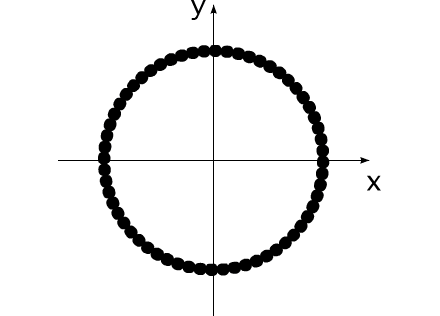
The total momentum of this point system is defined as follows:
[math]\vec P = \sum {{{\vec p}_i}} = \sum {{m_i}{v_i}} = {m_1}{{\vec v}_1} + {m_2}{{\vec v}_2} + {m_3}{{\vec v}_3} + ... + {m_i}{{\vec v}_i}[/math]
If all these points would have the same speed, then this speed could be taken out of the sign of the sum, and sum the mass:
And it would turn out like this:
[math] \ vec P = M {\ vec V_c} [/math]
In order for the speeds of all points of the system to become equal, all these points need to be simply connected!
Connect inelastically!
[math]{m_1}{{\vec v}_1} + {m_2}{{\vec v}_2} + {m_3}{{\vec v}_3} + ... + {m_i}{{\vec v}_i} \to Boom!!! \to ({m_1} + {m_2} + {m_3} + ... + {m_i}){V_c} = M{V_c}[/math]
Actually, what you schoolchildren only know how to do! ....
But here is the misfortune in this "simple" task ....As the author of this task, I came up with an inelastic connection of system components according to a special law.
Like this:

And in the total momentum for this system, the following regularity was determined:
[math]{m_1}{{\vec v}_1} + {m_2}{{\vec v}_2} + {m_3}{{\vec v}_3} + ... + {m_n}{{\vec v}_n} = ({m_{i1}} + {m_{i2}} + {m_{i3}} + ... + {m_{in}}){{\vec V}_{ic}} + ({m_{k1}} + {m_{k2}} + {m_{k3}} + ... + {m_{kn}}){{\vec V}_{kc}}[/math]
And what is very curious - the masses of particle systems with the same velocity (i.e. material points, material bodies!) - are constantly changing!
Look:[math]{m_1}{{\vec v}_1} + {m_2}{{\vec v}_2} + {m_3}{{\vec v}_3} + ... + {m_n}{{\vec v}_n} = ({m_{i1}} + {m_{i2}} + {m_{i3}} + ... + {m_{in}}){{\vec V}_{ic}}({t_1}) + ({m_{k1}} + {m_{k2}} + {m_{k3}} + ... + {m_{kn}}){{\vec V}_{kc}}({t_1})[/math]
[math]{m_1}{{\vec v}_1} + {m_2}{{\vec v}_2} + {m_3}{{\vec v}_3} + ... + {m_n}{{\vec v}_n} = ({m_{i1}} + {m_{i2}} + {m_{i3}} + ... + {m_{in - 1}}){{\vec V}_{ic}}({t_2}) + ({m_{k1}} + {m_{k2}} + {m_{k3}} + ... + {m_{kn + 1}}){{\vec V}_{kc}}({t_2})[/math]
[math]{m_1}{{\vec v}_1} + {m_2}{{\vec v}_2} + {m_3}{{\vec v}_3} + ... + {m_n}{{\vec v}_n} = ({m_{i1}} + {m_{i2}} + {m_{i3}} + ... + {m_{in - 2}}){{\vec V}_{ic}}({t_3}) + ({m_{k1}} + {m_{k2}} + {m_{k3}} + ... + {m_{kn + 2}}){{\vec V}_{kc}}({t_3})[/math]
Spoiler
Therefore, the total momentum of the entire system as a whole can be written as follows:[math]{p_{var}}(t) = {m_{liquid}}(t){{\vec v}_1}(t) + {m_{case}}(t){{\vec v}_2}(t)[/math]
0 -
21 hours ago, Mordred said:
First off the CM cannot change direction without acceleration that is basic physics. Acceleration includes changes in direction so some force must be involved internal or external.
Why can't it?
It may well!Brick
 - can't!
- can't!
[math]{{\vec R}_c}(t) = {{\vec R}_c}(0) + {{\vec V}_c}(t)t + \frac{1}{2}\frac{{{{\vec F}^e}}}{M}{t^2}[/math]
But the system of bodies
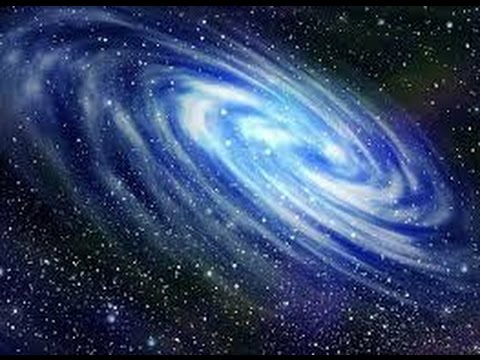 - it can even!
- it can even!
[math]{{\vec R}_c}(t) = \frac{{\sum {{m_i}(t){r_i}(t)} }}{{\sum {{m_i}} (t)}}[/math]
The CM equation for a complex system does not have a unique solution for a future point in time.
You can easily extrapolate the brick moving function - [math]{{\vec R}_c}(t) = {{\vec R}_c}(0) + {{\vec V}_c}(t)t + \frac{1}{2}\frac{{{{\vec F}^e}}}{M}{t^2}[/math] - without the “external forces” the brick path or “point” or “straight line”.
But for a system of bodies, the result of solving the CM equation is neither a straight line nor a line.
The center of Mass of a complex system of bodies is a REGION OF SPACE!
[math]{{\vec R}_c}(t) = \frac{{\sum {{m_i}(t){r_i}(t)} }}{{\sum {{m_i}} (t)}} = ?[/math]
0 -
34 minutes ago, Ghideon said:
Try answering questions instead of posting new questions. What will happen according to you? Will there be acceleration a>0 even if F=0?
For a brick, the unequivocal answer is NO!
[math]{a_{c1}} = \frac{{\left[ {{m_1}{{\ddot r}_1}} \right]}}{{{m_1}}} = {{\ddot r}_1} = 0[/math] if [math]{{\vec F}^e} = 0[/math]
For the CM system of bodies, the answer is YES!
Acceleration of the Center of Mass is not a function of "external force."[math]{a_c} = \frac{{{d^2}{R_c}}}{{d{t^2}}} = \frac{{\sum {{m_i}{{\ddot r}_i}} }}{{\sum {{m_i}} }} + \frac{{\sum {{{\dot m}_i}{{\dot r}_i}} }}{{\sum {{m_i}} }} = ?[/math] if [math]{{\vec F}^e} = 0[/math]
The acceleration of the CM of the system of bodies is the result of both external and internal forces.
But the most interesting is another!
The CM of a system of bodies can change without acceleration at all!You talk about CM, having in your head the concepts of "force", "acceleration", "velocity"
[math]{{\vec R}_c}(t) = {{\vec R}_c}(0) + {{\vec V}_c}(t)t + \frac{1}{2}\frac{{{{\vec F}^e}}}{M}{t^2}[/math]
But the CM "moves" like this:
[math]{{\vec R}_c}(t) = \frac{{\sum {{m_i}(t){r_i}(t)} }}{{\sum {{m_i}} (t)}}[/math]
The CM cannot move!
CM is not a material object!
A CM can only CHANGE how the result of a function of 2 (two) variables changes.20 minutes ago, Strange said:Moderator Note
This thread is for you to explain your idea, therefore you should be answering questions not asking them.
If this continues, this thread will be closed.
I also have the right to ask you questions.

Do you see the CM of this system?
Do you see how he moves?===
The Varipend task is not mathematically complicated and has a very accessible explanation from a physical point of view, which does not go beyond the school textbook.
but this task is extremely difficult in terms of psychology.
Therefore, I must ask you questions so that you LEARN to answer them YOURSELF.-2 -
will show how the coordinates of the CM of the Varipend system are determined:

[math]{r_c}(t) = \frac{{{m_{liquid}}(t){r_1}(t) + {m_{case}}(t){r_2}(t)}}{M}[/math]
What is necessary and (or) enough to know in order to calculate the CM of this system at any given time?
a) it is necessary to know the Law of Conservation of Momentum and on the basis of this law to calculate the coordinates and masses of parts of the system at any time?
b) it is necessary to know the Law of Conservation of Energy and based on this law to calculate the coordinates and masses of parts of the system at any time?
c) firmly enough to grammatically “know” how a brick behaves, which lies on the road in anticipation of external forces? Because it should be “obvious” to any dunce familiar with “twice two equals four”?0 -
9 minutes ago, Ghideon said:
Try answering questions instead of posting new questions. What will happen according to you? Will there be acceleration a>0 even if F=0?
Look carefully again!

The momentum of the moving substance changes
The change in momentum is called "force."
The force acts on the" body-case".
If the "body-case" is freed from external retention, the "body-case" will move with acceleration!
The change in the momentum of the "body-case", increasing its mass, will be equal to the change in the momentum of the moving mass.================================================================
once more!
================================================================
0 -
2 minutes ago, Ghideon said:31 minutes ago, butovsv said:
Who said "BODY"?
I did. I’m trying to understand what you are proposing. So I try to use words commonly used in scientific discussions. Put your rig inside a hollow sphere and call the complete assembly ”body” if that helps define an answer.
Oh well!35 minutes ago, Ghideon said:A body with mass=m is at rest in our frame of reference, in vacuum in free space. There are no external forces acting on the body; the sum of forces acting is = 0. According to Newton the equation F=ma describes the situation; how the object will accelerate. Since force F=0 then acceleration a=0. Are you claiming that you have found a way to make a body accelerate even when F=0?
Look carefully again!

Does the mass of the “body” change?
On the “case”, does the “force” act?
How will the “body-case” behave if it is allowed to move in its own way?What will the constant total momentum of this system look like in the absence of external forces?
0 -
1 minute ago, Ghideon said:
Ok. Let’s make sure we discuss the same thing.
A body with mass=m is at rest in our frame of reference, in vacuum in free space. There are no external forces acting on the body; the sum of forces acting is = 0. According to Newton the equation F=ma describes the situation; how the object will accelerate. Since force F=0 then acceleration a=0. Are you claiming that you have found a way to make a body accelerate even when F=0?
Body?!
Who said "BODY"?
Look again carefully!
What do you see?
0 -
32 minutes ago, swansont said:

Yes. I will ask again: what are the forces?
This force is equal to the change in the momentum of the moving substance moving along the trajectory.
32 minutes ago, swansont said:No, if the momentum remained constant, the center of mass would not move.
How do you get the ball to do what it does without external forces?
hM-m-m......
CENTER Mass of the body system is associated with the total momentum?
How long ago?Can you write an equation to calculate the center of mass of a system of bodies?
Can you write an equation that allows you to calculate the SUM MOMENTUM of all the bodies in the system?
Can you write the equation of CHANGE in the total momentum of a system of bodies?
Those. just differentiate the total momentum?0 -
2 minutes ago, swansont said:
Moderator Note
Your links were removed for a reason — they violate our rules on advertising (see rule 2.7 in the guidelines). Don't put them in again, or you will be banned as a spammer. Whatever you want to discuss needs to happen here, on this site.
We’ll fix it right now!
Although this is not an advertisement.
Here is this system, in this form:
The total momentum is
LINK DELETEDCHANGING !This suggests that “external forces” act on this system in this form!
If you release the system from external influences, then the
LINK DELETEDCONSTANT TOTAL MOMENTUM of this system will look like this:This is a simple solution to a First Order Differential Equation:
[math]{p_{var}}(t) = {m_{liquid}}(t){{\vec v}_1}(t) + {m_{case}}(t){{\vec v}_2}(t) = 0[/math]
!pvar(t)=mliquid(t)v⃗ 1(t)+mcase(t)v⃗ 2(t)=0
2 minutes ago, swansont said:I don't understand your objection. If I change the momentum of the brick, its velocity will change. Thus, velocity is an example of something that can change when there is an external force. And for a system of constant mass, it must change.
With a brick, everything is clear even to a schoolboy.
More precisely, the student does not know anything except the brick!Now please change the momentum of the system of bodies.
For example, brick systems!
Such a system, where many, many bricks!
0 -
Just now, swansont said:
And if something accelerates, its velocity changes. By definition.
Have you written your feelings about what object?
A brick?
Or about this value:
[math]R = \frac{1}{M}\mathop \sum \limits_{i = 1}^n {m_i}{r_i}[/math]
0 -
17 minutes ago, swansont said:
since they need not obey the laws of physics.
What law of Physics are you trying to protect with your breasts now?
-1


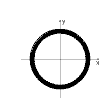


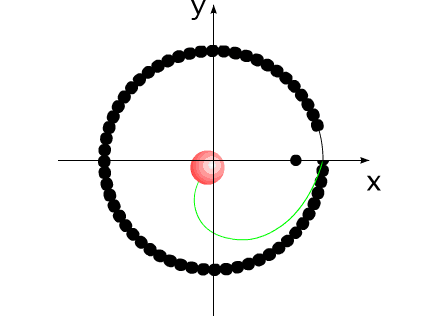
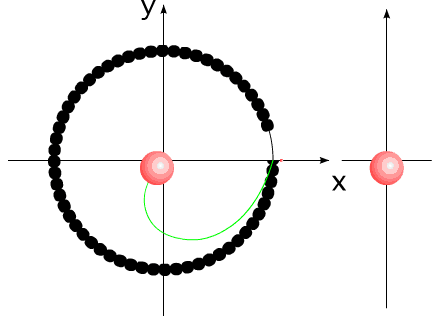
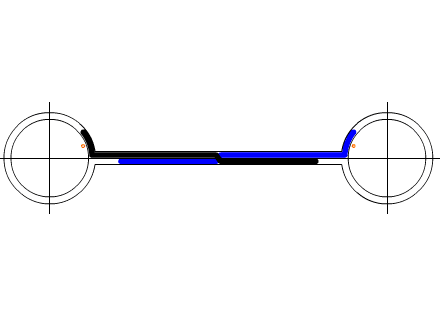
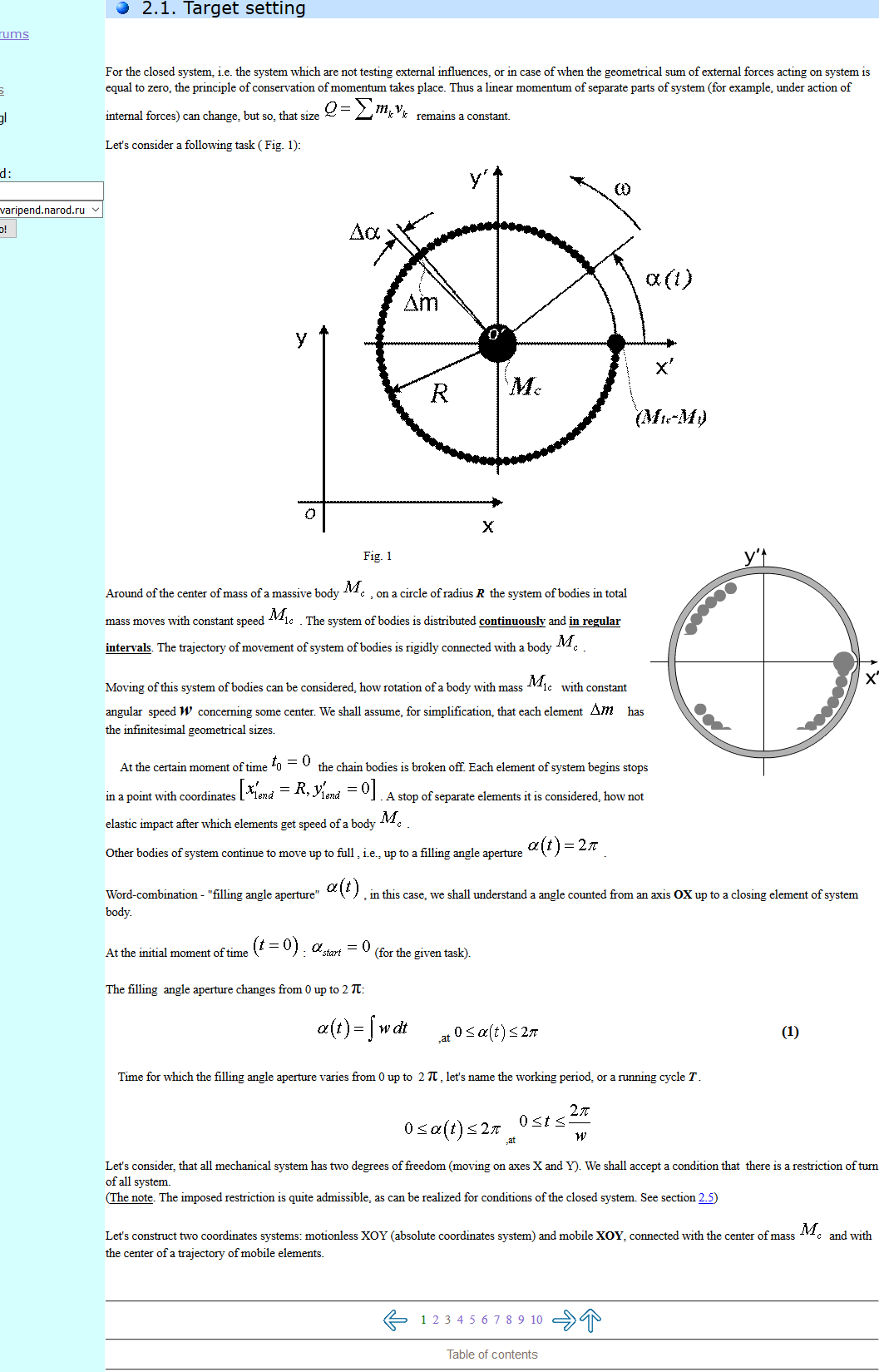


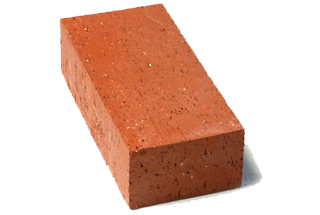
VARIPEND
in Speculations
Posted
The immutability of a human impulse is the immutability of a zero human momentum.
And the immobility of the Varipend systems looks like this:
The total momentum of this system is zero.
You can try to depict this system with a constant CM and a constant total momentum.
You won’t succeed.